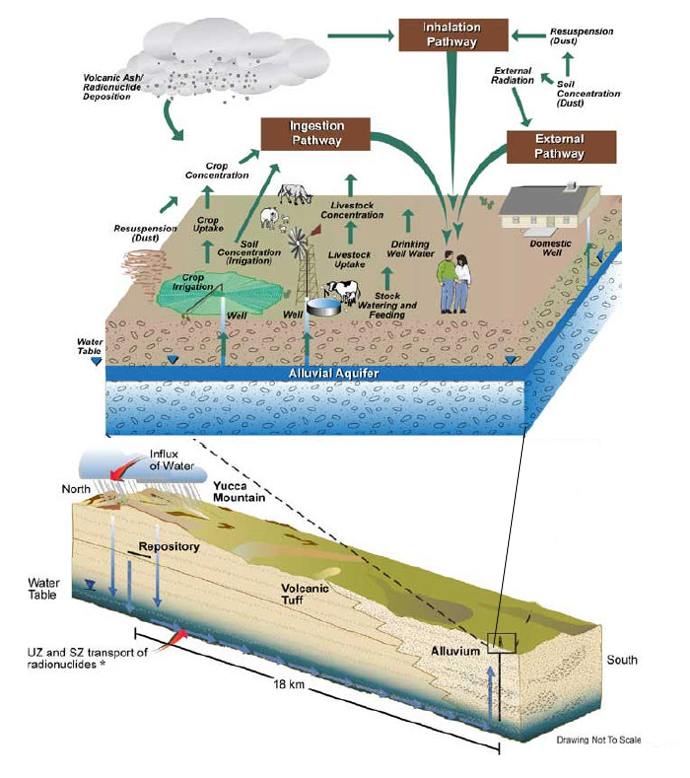Emails Indicate Possible Yucca Mountain Data Falsification
Government scientists conducting research on Yucca Mountain may have falsified data, according to a series of emails recently disclosed by the Department of Energy (DOE). Released to the public in early April, the emails imply that scientists may have made up details about how they conducted their research in order to appear to meet quality standards.
The emails were written by scientists working for the U.S. Geological Survey (USGS), a part of the Department of Interior. The scientists were studying how water would move through a proposed nuclear
waste repository at Yucca Mountain.
Water infiltration is an important component in predicting how fast radioactive material
would leak from a geologic repository. DOE has stated that the underlying science is sound and that the email controversy is unlikely to disrupt the current timetables for the repository project. Nevada
officials, however, expressed dismay over the disclosure, questioning the accuracy of the science underpinning the Yucca Mountain Project and calling for an independent investigation into the matter.
The Role of Quality Assurance
Several of the emails refer specifically to what is known as quality assurance, or QA. Quality assurance
is a system of management controls that requires scientists to follow national nuclear safety standards. DOE’s QA system for the Yucca Mountain Project is based on Nuclear Regulatory Commission (NRC) guidelines. It is essentially a document trail that mandates employees and contractors to keep consistent, high-quality records of their work.
The QA program plays a critical role in the Yucca Mountain licensing process, as it will be used by DOE to prove to the NRC that the proposed nuclear waste repository will function properly and meet health and safety standards.
According to NRC spokeswoman Beth Hayden, quality assurance documentation is “supposed to give us
confidence in the information” DOE submits to back up its request for a Yucca Mountain construction license. The emails in question suggest the scientists were producing work that would not meet quality assurance standards, and were occasionally falsifying information in ways they believed would satisfy the quality assurance inspectors.
One message, dated November 1999, states, “In the end I keep track of 2 sets of files, the ones that will keep QA happy and the ones that were actually used.” Appearing pressured and frustrated with deadlines,
the scientists indicate that they may have invented facts or deleted data that did not produce the desired result.
“I don’t have a clue when these programs were installed,” one scientist writes, “So I’ve made up the dates
and names . . . This is as good as it’s going to get. If they need more proof, I will be happy to make up more stuff.”
Another email, dated October 29, 1998, states, “Wait till they figure out that nothing I’ve provided them is
QA. If they really want the stuff, they’ll have to pay to do it right.” Other emails from the USGS scientists instruct the recipient to “delete this memo after you’ve read it.”
Reactions from Officials
Energy Secretary Samuel Bodman – photo below – expressed dismay over the content of the emails, stating, “I am greatly disturbed by the possibility that any of the work related to the Yucca Mountain project may have been
falsified. This behavior indicated in the e-mails is completely unacceptable.”
Bodman affirmed, however, DOE’s intentions to continue work on the repository project. “It has been my judgment that until I see something that indicates the science of this project has been compromised,
we’re going to go forward,” he said.
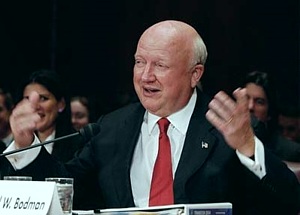 Nevada officials were also alarmed by the disclosure. According to Nevada Governor Kenny Guinn, “the fact
that data may have been intentionally fabricated in service of shoring up predetermined and politically driven conclusions calls into question the very legitimacy of this entire program.”
Nevada officials were also alarmed by the disclosure. According to Nevada Governor Kenny Guinn, “the fact
that data may have been intentionally fabricated in service of shoring up predetermined and politically driven conclusions calls into question the very legitimacy of this entire program.”
The emails were released to the public by the House Federal Workforce and Agency Organization Subcommittee, which held a hearing in early April regarding the alleged falsifications.
The subcommittee, which is chaired by Nevada Representative Jon Porter (R), summoned Energy and Interior Department officials to answer questions about the email messages.
Theodore Garrish, then deputy director of DOE’s Office of Civilian Radioactive Waste Management,
downplayed the damage to the scientific validity of the project. The falsified data “appears to be a
lapse in quality assurance protocol,” he said, “and at this time, we have no evidence that the underlying science was affected.”
But Nevada officials, including Attorney General Brian Sandoval, disagreed. “Such falsification irreparably
damages the legality of the project,” he testified. An official for the Interior Department said that two
or three scientists were involved in writing the emails, which may have circulated to 10 people. The emails
were dated between 1998 and 2000, when DOE was beginning assemble its scientific data in anticipation of
making a site recommendation on Yucca Mountain.
Ongoing Investigations
The disclosure has prompted investigations by the inspectors general of both DOE and the Department of
Interior. The inspectors general are working on criminal investigations in conjunction with the Justice Department and the Federal Bureau of Investigation.
A technical investigation is also being conducted internally by DOE to determine if and how the science may have been affected by the alleged falsifications. DOE disclosed the preliminary results from the internal
investigation to NRC staff in early June. According to John Arthur, deputy director for the Yucca Mountain
project, early findings of the investigation show the water movement studies to be technically sound. “The net infiltration estimates are technically defensible,” he said.
The data in question, however, will not be used to support DOE’s upcoming application for a license to
construct the repository. “While the numbers look good, we also recognize they are only as good as the integrity of the individuals that prepared them,” Arthur told the NRC. “Our action is to make sure we have other individuals and organizations look to make sure the information is either replaced, redone, or remediated so it stands up in our license application.”
Unsatisfied with DOE’s investigation, Nevada officials have called for an independent probe of the alleged
falsifications. The House subcommittee chaired by Nevada Representative Porter has announced plans to hire a full-time investigator to lead an examination. The investigator will scrutinize the emails and analyze the management practices that may have led to the fabrication of data.
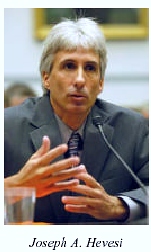 The subcommittee has interviewed three of the scientists involved in writing the emails. Joseph
A. Hevesi, a hydrologist with USGS, was subpoenaed to appear before the panel after failing to
respond to earlier requests. During his testimony Hevesi characterized the emails as “raw emotional responses” that merely reflected frustration with his work. “I have never falsified any documents regarding Yucca Mountain or any other project,” he told the subcommittee.
The subcommittee has interviewed three of the scientists involved in writing the emails. Joseph
A. Hevesi, a hydrologist with USGS, was subpoenaed to appear before the panel after failing to
respond to earlier requests. During his testimony Hevesi characterized the emails as “raw emotional responses” that merely reflected frustration with his work. “I have never falsified any documents regarding Yucca Mountain or any other project,” he told the subcommittee.
Two of the other scientists involved in writing the emails, Alan L. Flint and Lorraine E. Flint, have also
been interviewed in person by the subcommittee. All three are currently assigned to the USGS office in Sacramento, California.
The scientists worked on the Yucca Mountain Project during the 1990s, contributing research
and data to computer models that predicted rates of water flow through the proposed repository.
The subcommittee also subpoenaed a series of Yucca Mountain project documents for review. DOE delivered 1,652 pages of information to the subcommittee in July, but failed to submit the draft license application, which was among the 10 sets of documents required by the
subpoena.
Eric Fygi, DOE’s acting general counsel, said the additional documents will be given to the subcommittee
as “we identify and collect them.” The email messages came to light in December when contractors working for DOE were preparing documents for a license application for the proposed repository.
The Yucca Mountain site must be granted a license by the Nuclear Regulatory Commission (NRC) before DOE can move forward with the construction and operation of the proposed facility. The license application was originally slated to be submitted to NRC by December 2004. Currently, DOE plans to announce a new target date for submission in August based upon its ability to prepare supporting documents in electronic format.
It remains to be seen whether NRC will ask DOE to redo some of its scientific work as a result of the email
disclosures.
(Sources: Las Vegas Sun, 4/5/05, 6/7/05; Las Vegas Review-Journal, 4/2/05,
6/30/05; New York Times, 3/17/05, 4/6/05)
|


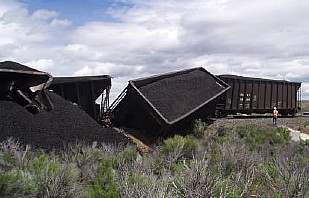
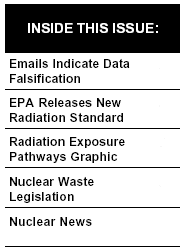
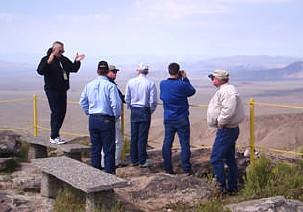
 Nevada officials were also alarmed by the disclosure. According to Nevada Governor Kenny Guinn, “the fact
that data may have been intentionally fabricated in service of shoring up predetermined and politically driven conclusions calls into question the very legitimacy of this entire program.”
Nevada officials were also alarmed by the disclosure. According to Nevada Governor Kenny Guinn, “the fact
that data may have been intentionally fabricated in service of shoring up predetermined and politically driven conclusions calls into question the very legitimacy of this entire program.”
 The subcommittee has interviewed three of the scientists involved in writing the emails. Joseph
A. Hevesi, a hydrologist with USGS, was subpoenaed to appear before the panel after failing to
respond to earlier requests. During his testimony Hevesi characterized the emails as “raw emotional responses” that merely reflected frustration with his work. “I have never falsified any documents regarding Yucca Mountain or any other project,” he told the subcommittee.
The subcommittee has interviewed three of the scientists involved in writing the emails. Joseph
A. Hevesi, a hydrologist with USGS, was subpoenaed to appear before the panel after failing to
respond to earlier requests. During his testimony Hevesi characterized the emails as “raw emotional responses” that merely reflected frustration with his work. “I have never falsified any documents regarding Yucca Mountain or any other project,” he told the subcommittee.
 According to the EPA, 350 millirems is an appropriate number given the uncertainties of calculating radiationstandards so far into the future. “It’s a real scientific challenge, but we think we’ve done it in a way that
is consistent with the best science,” said Jeffrey Holmstead, EPA assistant administrator for air and radiation.
According to the EPA, 350 millirems is an appropriate number given the uncertainties of calculating radiationstandards so far into the future. “It’s a real scientific challenge, but we think we’ve done it in a way that
is consistent with the best science,” said Jeffrey Holmstead, EPA assistant administrator for air and radiation.
